One of the surprising hits from the end of the Wii U’s lifecycle was Super Mario Maker, a game that challenged the entire Nintendo community to create their own Mario levels and see just how fun, devious, inventive, and cruel they could be. The title caught on quickly and it seemed inevitable that a sequel would arise on the Switch. Lo and behold, Super Mario Maker 2 arrived at the end of June with a few new features added, including making levels cooperatively with a buddy, playing user-made levels offline with up to three friends, and an online/WLAN co-op mode. While making and playing levels is a lot of fun in single-player - and it’s worth picking up the game for those aspects alone - the co-op is severely disappointing.
If, like me, you never played the first Super Mario Maker, the initial idea of creating your own Mario level may seem a bit daunting. Where do you place the question mark blocks, or decide which ones should have power-ups vs. just coins? How many Goombas and Koopas should there be? Should you use doors, keys, P-Blocks, and all those other options at your disposal? Maybe there needs to be a sub-world? It’s a lot to take in at once. Fortunately, there are plenty of ways to help you get accustomed to everything and get your creative ideas flowing.
While the new “Story Mode” doesn’t exactly have much in the way of a narrative (Peach’s castle needs to be rebuilt), it does have a number of levels designed by Nintendo to help showcase the kinds of things you can make in Super Mario Maker 2, such as overcoming seven different mini-challenges to get enough keys to open the way to the flagpole. There are 116 of these stages in total to play, though you only need to complete 60 of them to finish rebuilding the castle. There are two items you can unlock to use in the “Maker Mode” (unlike in the first game, pretty much everything is unlocked from the start), but everything else is outfits that can be used to customize your Mii avatar. Once you’ve gotten an idea of what you can do, you can head over to “Yamamura’s Dojo” for a series of tutorials that breakdown different aspects of level building/construction so you can ease your way into it; or you can jump into the “Course World” to check out what other people have created.
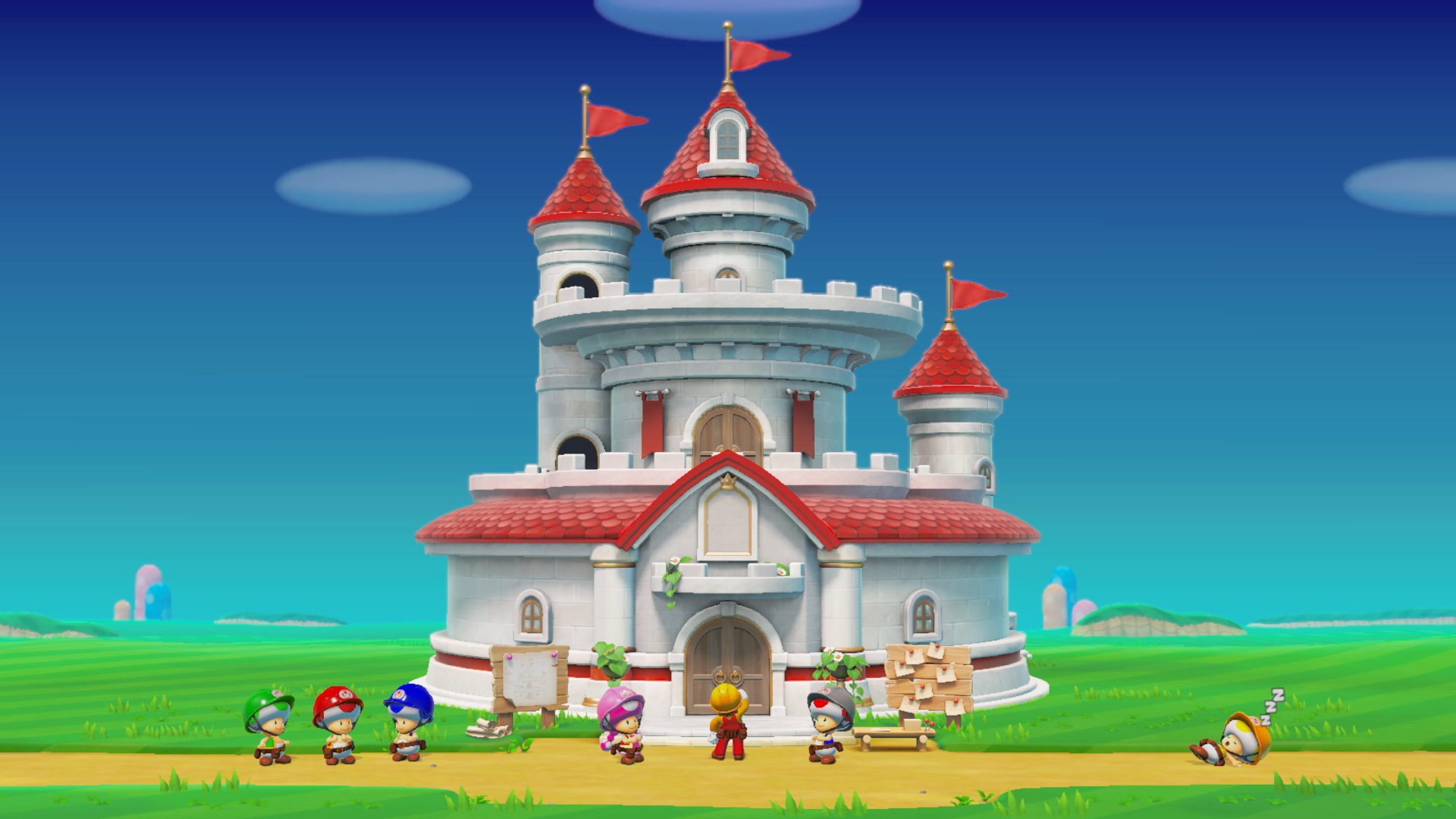
When you first enter “Course World,” you’re presented with four options: Courses, Leaderboards, Network Play, and Endless Challenge (which was “100 Mario Challenge” in the first game). There’s also an option on the side to input a specific Level ID or Maker ID if you’re hunting for a particular level to play, or Maker to follow. For the Courses, you can view the different courses that are “New” or “Popular” (as determined by the community), and you can also search for courses based on tags, like “Puzzle” or “Themed.” Once you pick a course, then you hop in, attempt to clear it, and then move on to the next one. If you like a particular one, then you can “favorite” it to play again later, or tell your friends about it so they can play (you’ll have to give them the Level ID code, of course).
Backing up to the “Course World” main menu, the Leaderboards section lets you see the top Makers and Players, so you can check out what other people are making or playing, and the Endless Challenge lets you set an overall course difficulty (Easy, Normal, Expert, Super Expert) and attempt to clear as many of those levels as possible with a limited pool of lives. It is awe-inspiring to see the ways people have taken something so familiar, broken it, and put it back together into something you never knew was possible. Even if you’re not interested in making your own Mario level, there are enough levels to go through from the community that you’d get a lot out of Super Mario Maker 2 just playing all of those.
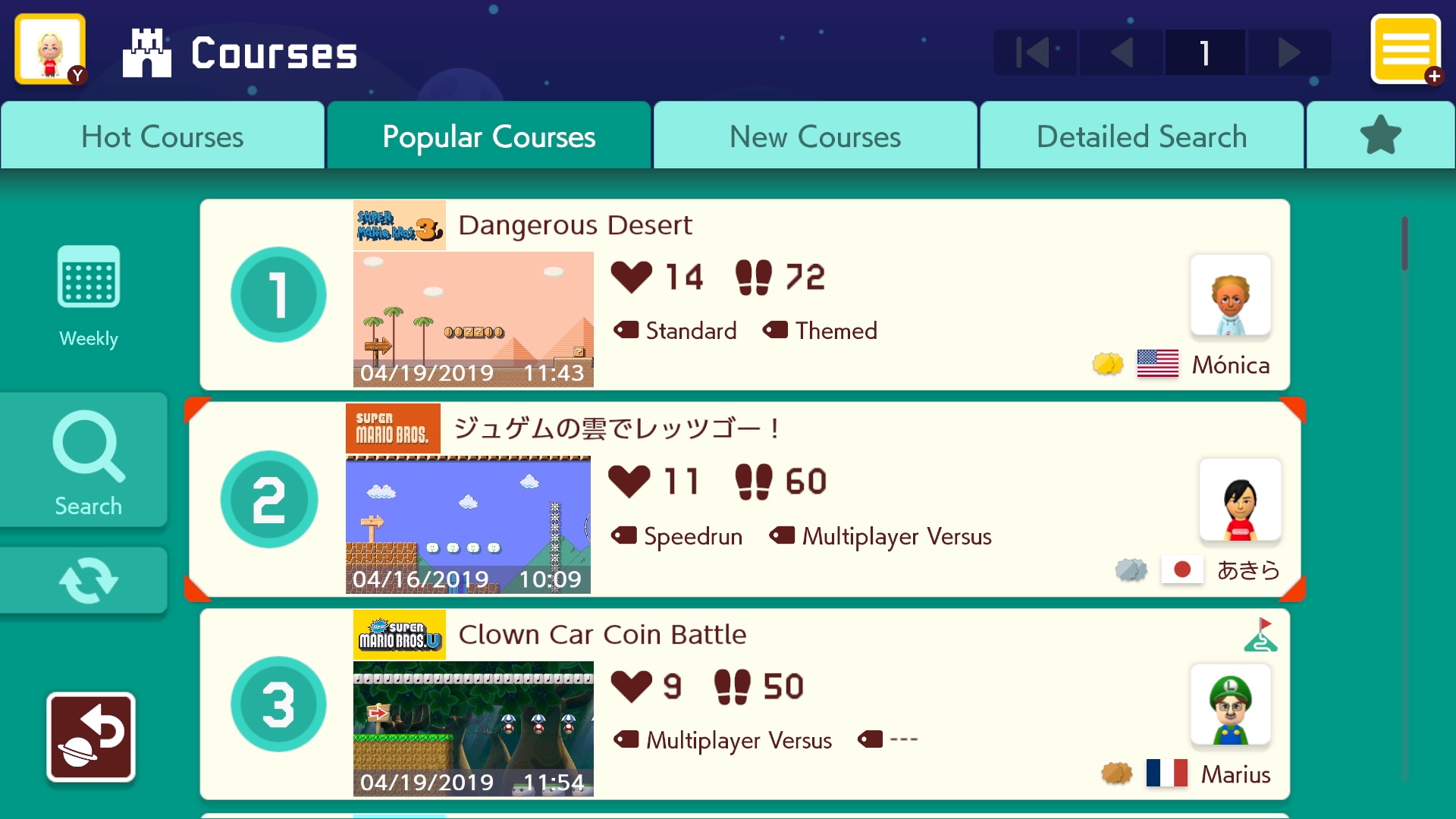
The actual construction, testing, and tweaking of a level can be a fairly lengthy and hard-to-explain process; it’s one of those better to do/see than describe situations. That being said, there are two different ways you can go about making a level. You can use the Joy-Cons or Pro Controller to pick and place the different level construction pieces while the Switch is docked, or you can use the touchscreen when it is undocked. The latter is definitely the easier way as you can just touch the item, enemy, gizmo, or terrain you want to add to the level, and then touch on the screen where you want it to go. If you’re adding a bunch of one thing, like ground, then you can just “paint it” on by dragging your finger across the screen. Using the Joy-Cons or Pro Controller, you’ll have to use a combination of buttons, directional pad, and analog sticks to achieve the same results. It’s do-able, but definitely feels a bit clunky at times.
As you build out your level, you can hop into it at any time and any point to test things out and ensure things are working as you envisioned. Once you’re all done building, you’ll have to play through the whole thing from start to finish (and from each checkpoint, if you placed any, to finish) in order to “prove” that your creation can be completed and isn’t just some cruel labyrinth of death and despair. After that, you can take the level code the game provides to you and share it with friends, families, and strangers so they can try it out themselves.
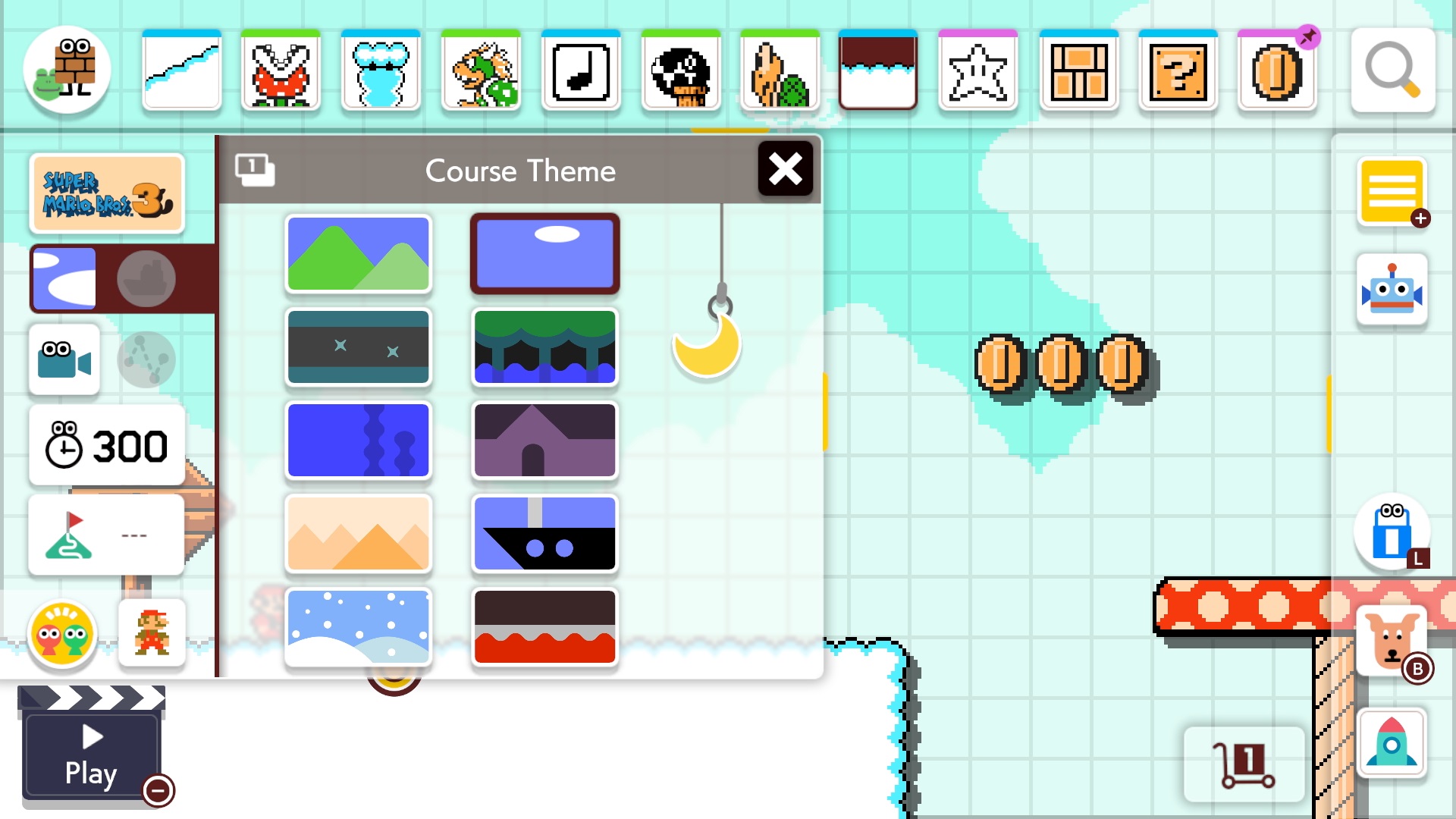
While there are some issues with both the level playing and level creation - such as the need for a better search/filter function when finding levels, not being able to follow people on your friends list directly and needing their Maker ID, and better menu navigation for the controllers in the “Maker Mode” - I feel they pale in comparison to the co-op aspects. The joy I felt when playing these great community-made levels and in making my own all came crashing down when I ventured into Super Mario Maker 2’s co-op offerings.
There are three different ways to play cooperatively in the game: “Maker Mode”, playing a downloaded level with up to three friends via couch co-op, and the Network Play. Tackling the download courses first, all levels found within the “Course World” can be downloaded locally to your Nintendo Switch, up to a max of 60. These courses are found under their own section of the “Coursebot,” and when you select one, there’s a little icon off to the right that sort of resembles four people. After selecting this, you’ll be prompted to have each player tag in with their controller of choice (Joy-Con or Pro), filling in the roles of Mario, Luigi, Toad, and Toadette. As you play through the level, if a player dies then they’ll automatically respawn at another player’s location after a few seconds. As one player stays alive then you won’t fail the level and only one person has to reach the goal in order for everyone to win.
However, there is no splitscreen functionality and the camera doesn’t track any one player in particular, staying with what feels like some kind of “average position” based on the location of all players. This means all players have to pretty much move as a group. If not, the trailing players will get pushed towards the center of the screen as the camera moves forward/backward, or go off the screen all together at the top and bottom. None of this makes the level any easier or very cooperative in nature, particularly if you’re attempting any of the “Speed Run” levels. Your best bet is probably to search for and stick to the courses with the “Puzzle-solving” tag as you can at least employ the “two heads are better than one,” way of thinking.
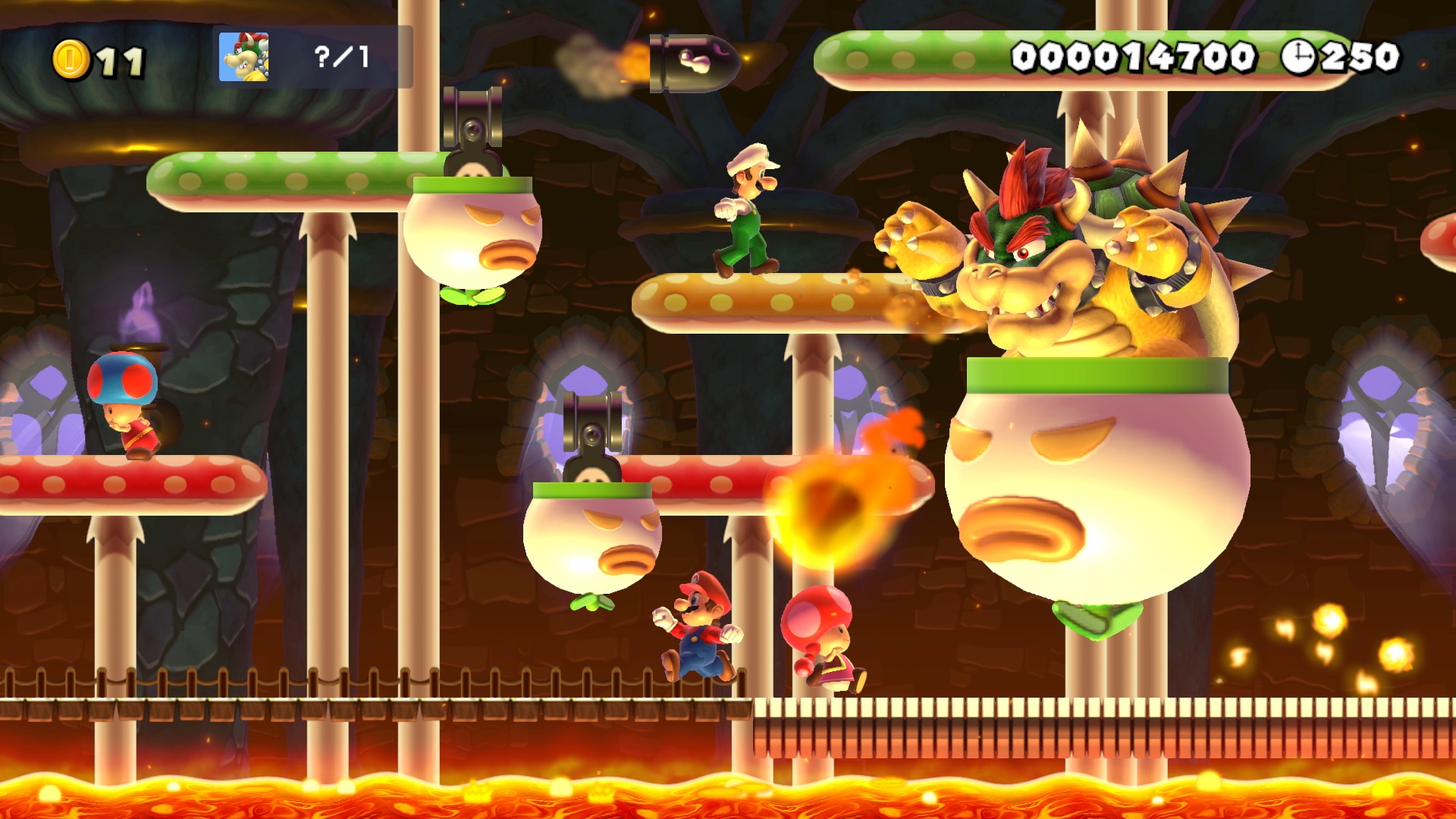
Much of these mechanics also apply to the “Online Co-Op” and “Local Wireless Lobby” co-op, i.e., four players play through a level “together” and just one player needs to reach the goal in order to clear the course. If a player dies, then they can choose to respawn at another player’s location. Unlike the downloaded courses, however, you can’t choose what levels you play or, in the case of the Online Co-Op, what players you’ll be teamed up with. Even in the Local Wireless mode, if you don’t have three other players joining your lobby, the game will automatically pull in random players to fill the empty spots. Nintendo has said they’re working on an update that will let you play with friends online, but even with that, I’m not sure it’ll make the mode any better. Connections are usually laggy so there’s always some stuttering as you play (which isn’t good for a platformer), and more often than not you’ll be playing levels that are marked as “Multiplayer Versus” as the whole Online/Local Wireless Co-Op modes just feel like practice for the Versus modes.
At this point, you may be thinking, “sounds like Super Mario Maker 2 isn’t very co-op friendly, but there’s still the co-op level making, right?” I had hoped the same. I had hoped that maybe I just hadn’t found any good co-op levels; maybe I could make one. Those hopes were quickly dashed.
In the “Maker Mode”, you can create and design a level with a couch co-op buddy. Each person uses a Joy-Con (it HAS to be a Joy-Con) regardless if the Switch is docked or undocked, and each player can place things in the level where they please. Items are not “locked” to the player that placed them, so if my co-op buddy put down a question mark block and I want it to be a coin instead, I can erase the block and place what I want. The only limitations here are that the second player cannot use the “multigrab and move”, or copy functions, and the second player is bound to wherever on the level the first player is looking (i.e., there’s no splitscreen and the second player cannot shift the camera focus). The latter is disappointing because it would be helpful, at times, to have another player working on a different part of the level so the whole thing would go faster.
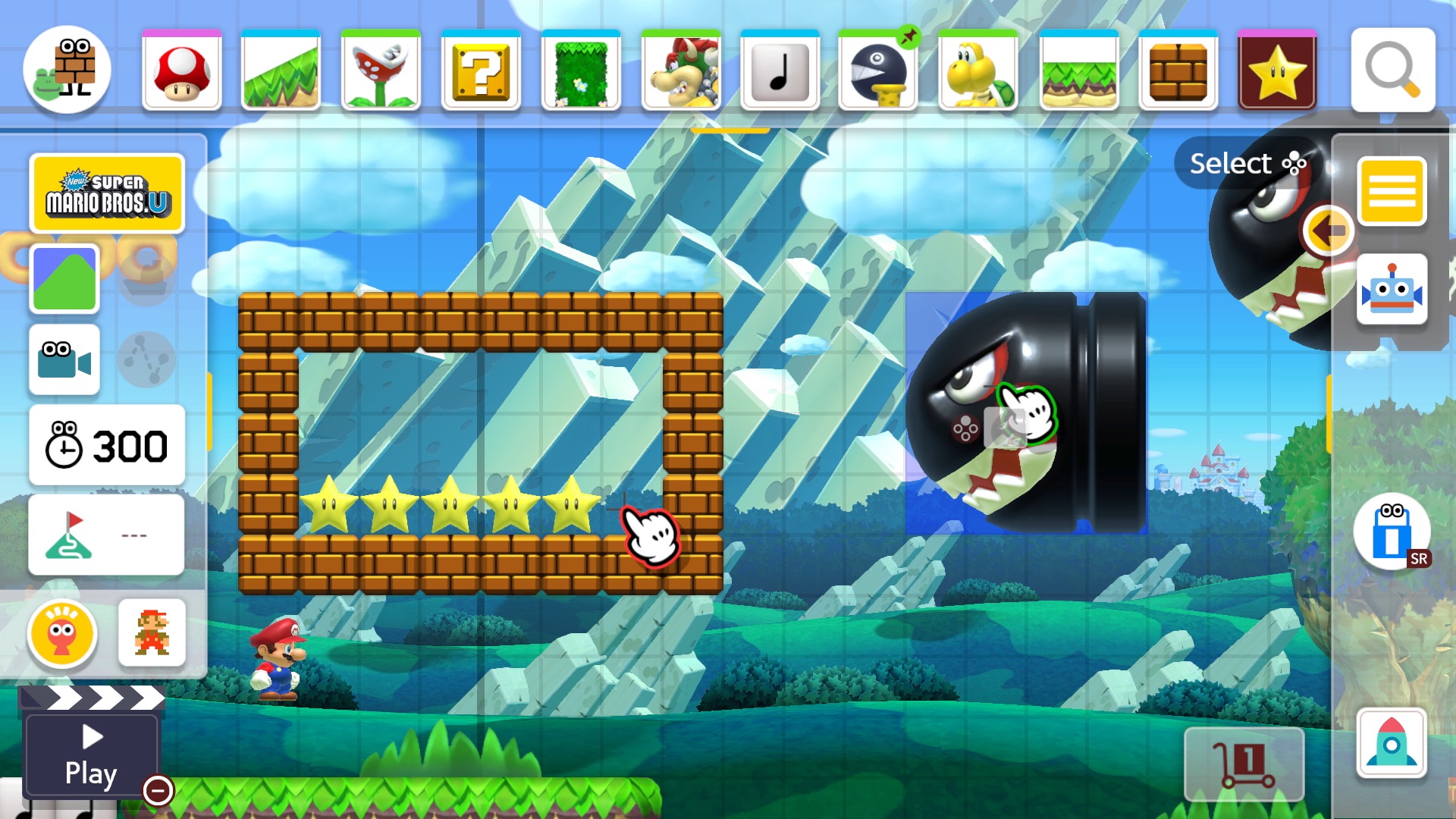
However, what makes the entire experience feel frustrating is that the second player is locked out of doing anything when the first player is navigating some menus, or when they are in the multigrab or copy modes. The second player could be in the middle of something and they are suddenly prevented from doing anything until the first player finishes what they were doing in the menus. Because of all this, the best way to create a level with a friend is to sit down with a sheet of graph paper, sketch out what you want to do, and then have one person creates it while the other watches/offers feedback.
Once the level is done, you’ll discover the final nail in this coffin: all levels created in Super Mario Maker 2 have to be completed by a single player only. While you can play with your “Maker Mode” buddy as you’re creating the level by switching to the testing mode - just as you would if you were making a level on your own - once you get to the point of “uploading” your creation it has to be done by just one person. This means you can't create any situations where cooperation is needed, such as one person hitting a switch while another progresses, and then that player hits a switch to let the first player progress. It feels like Nintendo wasn’t quite sure how to separate out these disparate (single-player, co-op, and versus) gameplay modes and settled with tacking on co-op as a kind of “by the way…”

As much as I wish I had something good to say about Super Mario Maker 2’s co-op offerings, there just isn’t. There are problems left and right that make every attempt to play with friends feel like an exercise in frustration. There is a lot of fun to be had in Super Mario Maker 2; sadly, very little can be found with a friend.
Verdict
Co-Op Score
Overall
The Co-Op Experience: Co-op play in Super Mario Maker 2 is supported in three different modes, which have been improved with update 1.1.0. Build Mode - In the Build Mode, two players on the same system (couch co-op) can work side-by-side to create a course on a single screen. Each player will need to use a Joy-Con controller for this. Downloaded Courses - You can download any course made by the community from the Course World and play through it with up four players locally on the same system (couch co-op). Each player will need to use a Joy-Con or Pro controller for this. Course World - You can play other players' custom level creations in the Course World mode locally, online, or via LAN. To play courses locally on your couch, simply locate the course you wish to play and then choose "Play Together." To play online or via LAN, within the "Network Play" section of Course World, there are two different co-op options: Global Play (online) and Nearby Play (local wireless LAN). Global Play teams you up with three other players from around the world, or play with friends and work together to clear a course. When playing with friends, you can play a random course from "Course World," courses you have created, or any of the courses you have downloaded. Each player will need their own Nintendo Switch, a copy of Super Mario Maker 2, and a Nintendo Switch Online Membership. Nearby Play lets you create a virtual room that other local players can join in order to work together to clear a course. For the Nearby Play, each player will need their own Nintendo Switch and copy of Super Mario Maker 2. When playing with friends, you can play a random course from "Course World," courses you have created, or any of the courses you have downloaded. If playing a course from "Coursed World," the host player will require an Internet connection and an active Nintendo Switch Online Membership.
Co-Optimus game reviews focus on the cooperative experience of a game, our final score graphic represents this experience along with an average score for the game overall. For an explanation of our scores please check our Review Score Explanation Guide.
